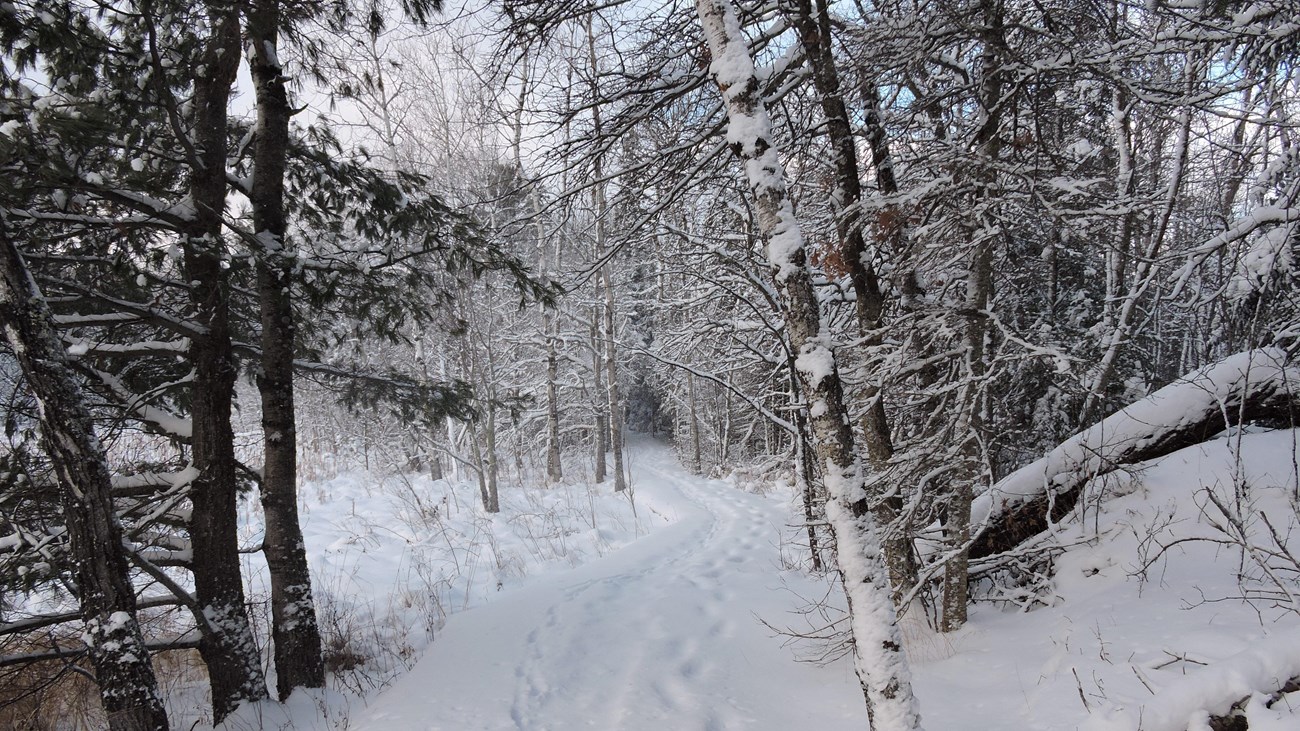Last updated: October 28, 2021
Thing to Do
Snowshoe the Oberholtzer Trail

Grab a pair of snowshoes and experience the 1.7 mile round-trip Oberholtzer Trail. Visitors to the park often hike this trail in summer due to its convenient location - near the Rainy Lake Visitor Center. In winter, the ice and snow cover creates a completely different trail experience.
Read the latest Winter Ice and Trail Conditions Report (Posted weekly during the winter months) for the most updated park ice and trail conditions.
The Oberholtzer Trail was named after conservationist – Ernest Oberholtzer who lived not far from the doors of the Rainy Lake Visitor Center. Ober (as he was known) built his home on Mallard Island in 1915. Years earlier, Ober met an Ojibwe guide - Billy Magee and became fast friends. They traveled, by canoe, thousands of miles throughout the area and into Ontario, Canada.
After years of travel with Billy Magee, Ober realized the area should be set aside for all to enjoy and spearheaded a movement to stop dam development in the region. Oberholtzer’s persistence led to the passage of the Shipstead-Newton-Nolan Act in 1930. This legislation, based largely on Ober’s alternative plan for the region, prohibited the changing of water levels in the Superior National Forest. It was the first legislation ever passed by the U.S. Congress that mandated wilderness values on federal lands.
Ober and the many other conservationists, with whom he worked, were successful in setting aside nearly three million acres of wilderness known today as the Boundary Waters Canoe Area Wilderness. Many of his fellow conservationists would later help establish Voyageurs National Park.
Read the latest Winter Ice and Trail Conditions Report (Posted weekly during the winter months) for the most updated park ice and trail conditions.
The Oberholtzer Trail was named after conservationist – Ernest Oberholtzer who lived not far from the doors of the Rainy Lake Visitor Center. Ober (as he was known) built his home on Mallard Island in 1915. Years earlier, Ober met an Ojibwe guide - Billy Magee and became fast friends. They traveled, by canoe, thousands of miles throughout the area and into Ontario, Canada.
After years of travel with Billy Magee, Ober realized the area should be set aside for all to enjoy and spearheaded a movement to stop dam development in the region. Oberholtzer’s persistence led to the passage of the Shipstead-Newton-Nolan Act in 1930. This legislation, based largely on Ober’s alternative plan for the region, prohibited the changing of water levels in the Superior National Forest. It was the first legislation ever passed by the U.S. Congress that mandated wilderness values on federal lands.
Ober and the many other conservationists, with whom he worked, were successful in setting aside nearly three million acres of wilderness known today as the Boundary Waters Canoe Area Wilderness. Many of his fellow conservationists would later help establish Voyageurs National Park.
Details
Activity
Snowshoeing
Pets Allowed
No
Activity Fee
No
Entrance fees may apply, see Fees & Passes information.
Location
Near the Rainy Lake Visitor Center.
Reservations
No
Season
Winter
Accessibility Information
The trail is accessible for the first 1/4 mile on a 4 foot wide crushed gravel path. Beyond that the path is uneven with roots and rocks.
